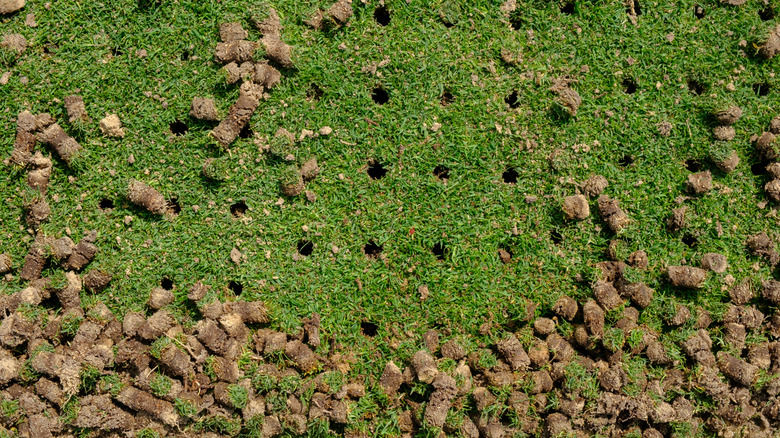What Is The Best Time Of Year To Aerate Your Lawn?
We may receive a commission on purchases made from links.
If you've noticed brown patches or bare spots on your lawn, this fall you can do something about it. Cool season grasses, like Kentucky blue grass, then you may need to aerate your lawn. Anytime in September could be the perfect time to give it a health boost.
Aerating your lawn is the process of poking holes in the grass to help with air flow and to loosen up compacted roots that might be inhibiting grass growth. Fall is typically the best time for lawn aeration for cool season grasses because it's right before the lawn goes dormant for the season. If you've got warm season grasses, more common in the south, then spring or late summer is your best time for aeration. You can always do a little research about grass types by zones to figure out which one you have.
For the best tips to learn to plant seeds and aerate a lawn, start with understanding that there are two kinds of aeration: plug aeration and spike aeration. Plug aeration comes about when you use a plug aerator that dips in the ground and pulls out a cylinder of soil. Spike aeration is about like it sounds — just driving a spike into the ground. Plug aeration is healthier for lawns because it makes space in the soil while spikes can compact clay soil or squish roots further. You can buy a core aerator (used in plug aeration), like the Yard Butler manual lawn coring aerator, to help you out.
How to aerate your lawn this September
If you want to make do with a tool you might already have in your house for aeration, grab your drill – the unexpected power tool that can bring your patchy yard back to life! Aerating is easiest to do right after a rainfall, when the ground is moist and not dry. Just be careful not to aerate a water-logged lawn. You want the ground slightly damp, not muddy.
How do you know if your lawn really needs to be aerated? Try the screwdriver test. Stick a screwdriver into the lawn in various spots when it's dry. If it's very hard to poke in, then your soil might be compacted and could benefit from some aeration. You'll want to concentrate efforts in bald patches or unhealthy areas of grass.
After aerating, it's best to overseed the new holes so new grass sprouts can take hold. Overseeding in the early fall, like in September, will help new grass seedlings get established before the first frost. You can also aerate in October, but stick to the early part of the month. Otherwise, an early frost might undo all of your hard work. Each kind of grass has a different overseeding rate, so check for yours. For example, overseeding rates for Kentucky bluegrass are typically 1.5 pounds of seed per 1,000 square feet of lawn. Don't forget, you'll need to water the lawn regularly to make sure the new seeds germinate.

